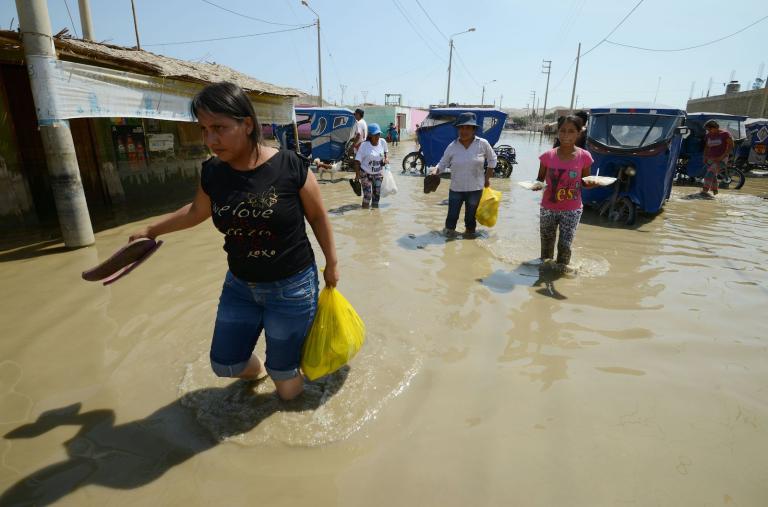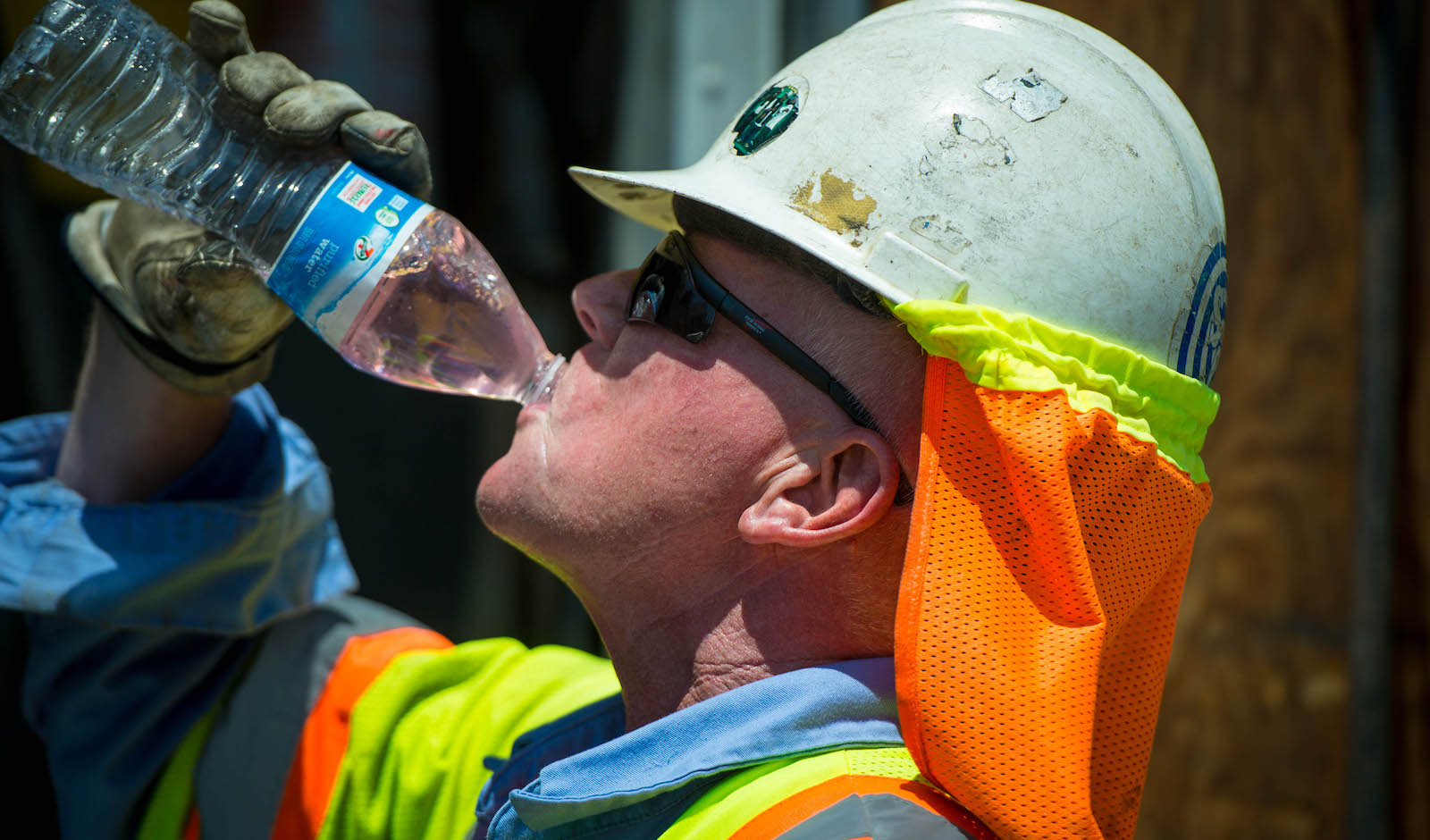In the summer of 2010, the Workers Defense Project, a Texas-based group that supports immigrant workers in the construction industry, organized a “thirst strike” in front of Austin’s city hall. More than a dozen workers and advocates sat in the June heat and went without water for six hours on a day that reached 90 degrees Fahrenheit.
The strikers wanted the city council to require employers to provide drinking water and regular breaks to workers after a survey found that many construction workers were not receiving either, even though temperatures in Austin have reached as high as 112 degrees F. The campaign was a success — that year, the city council passed an ordinance mandating that construction workers get a 10-minute water break every four hours. In 2015, Dallas adopted a similar requirement.
But now, E&E News reports that Republican lawmakers in Texas are pushing a bill that would eliminate these minimal protections that help workers survive on very hot days, which are increasing in number and severity with climate change. The bill, which was passed by the Texas Senate in May, strips municipalities of the ability to regulate employment benefits and policies, and was proposed in order to stop cities from issuing protections related to the COVID-19 pandemic, like mandatory sick leave.
More than 30 million Americans earn their living doing physical labor outdoors, according to a Union of Concerned Scientists analysis of census data, and increasingly, they are working in extreme heat. From farmworkers and foresters to construction and maintenance workers, outdoor workers are up to 35 times more likely to die from exposure to extreme heat than the general population, according to past research. But while the risks of working in heat have been documented and studied by government agencies since at least the 1970s, the United States has yet to enact national labor standards to protect workers on very hot days. In the absence of national standards, only a few cities and two states — California and Washington — have issued their own protections.
Two new reports released on Tuesday illustrate the consequences of the government’s inaction and forecast how much worse the impacts of heat on outdoor workers could become if climate change is not curbed quickly.
An investigation by NPR and Columbia Journalism Investigations found that the three-year average of worker heat deaths has doubled since the early 1990s, and that workers of color have been hit hardest. Their analysis of data from the Occupational Safety and Health Administration, or OSHA, and the Bureau of Labor Statistics shows that there have been 384 documented heat-related on-the-job deaths since 2010, one-third of which were Hispanic workers. But that number is a “vast undercount,” the investigation says, because not all companies report worker fatalities.
OSHA has considered but declined to issue national heat standards that would protect workers specifically from heat, like setting mandatory water breaks, since 1972. Instead, the agency enforces a hazier regulation that requires employers to protect workers from “recognized serious hazards in the workplace,” including heat-related hazards.
NPR and Columbia’s reporting, as well as internal OSHA assessments, have found that the agency’s enforcement of this regulation with regard to heat has been haphazard and mostly ineffective at preventing fatalities. The investigation uncovered at least 12 companies that have had multiple workers die from heat. In five of those cases, OSHA investigated the first death and issued a citation, but those actions did not prevent a second death. In at least one case with Hellas Construction in Fort Worth, Texas, OSHA negotiated a settlement under which the company would have to implement new safety measures. But records show Hellas did not carry them out, and OSHA did not follow up to enforce the settlement. At least 53 workers have died from heat-related causes in Texas since 2010.
Former OSHA officials said that the agency has delayed setting enforceable heat standards because of industry opposition. “Every time OSHA proposes a standard, [the] industry accuses OSHA of killing jobs and destroying whatever industry is going to be regulated,” Jordan Barab, a former deputy assistant labor secretary, told NPR and Columbia.
But a new study from the Union of Concerned Scientists warns that failing to protect workers could have severe economic impacts as extreme heat gets worse in the future. The researchers found that under a scenario where greenhouse gas emissions don’t peak until 2040, there would be a threefold increase in the exposure of outdoor workers to days that feel like 100 degrees F or hotter by midcentury. Without paycheck and workplace protection measures in place, these hot days would result in lost work time, and therefore lost earnings, resulting in about a 10 percent reduction in annual earnings for 4 million people, or about $39 billion total. That would have ripple effects throughout communities, reducing local income tax revenue and increasing demand for public services, the study notes. But the authors write that adaptation measures, like adjusting work schedules to cooler times of day, and lightening workloads, have the potential to prevent these impacts.
The preemption bill in Texas is currently in limbo until House Democrats return to the chamber after having fled the state earlier this summer to prevent a quorum that would allow new voting restrictions to pass. Texas Democrats don’t have the votes to block the new law that will kill Dallas and Austin’s worker protections, but there is finally momentum at the federal level to create new heat safety standards. In March, Democratic Senator Sherrod Brown of Ohio reintroduced the Asunción Valdivia Heat Illness and Fatality Prevention Act, named after a farmworker who died in 2004 after 10 hours of work in 105 degree F heat. The bill would direct OSHA to develop new safety standards as well as training and education requirements that would help workers respond to heat-related illness.
But the Biden administration may develop new safety standards without the nudge from Congress. This spring, the Department of Labor put a request for information regarding a new heat standard on its regulatory agenda. Acting director of OSHA Jim Frederick, told NPR and Columbia that it was a “priority.”




